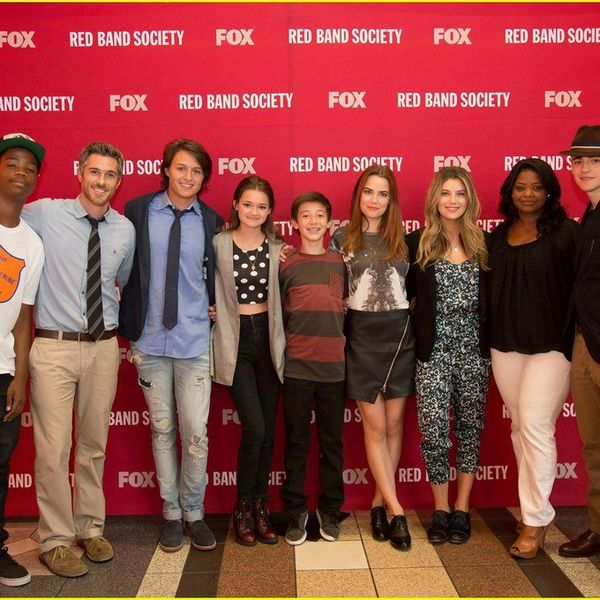When my parents had my sister, Rachel, they could never fathom the journey we were about to endure. When Rachel was born, she was a bubbly, happy, blonde who was seemingly healthy. After irregularities were detected at 15 months old, she was diagnosed with a rare, genetic disease called Hurler syndrome. She immediately needed a bone marrow transplant to support the deficiencies within her body. After searching for a donor, we learned that Jordan, my older sister, was a perfect match, and she donated her marrow for both her transplants, that were 14 months apart.
What is Hurler syndrome?
Hurler syndrome is a form of MPS, which is the overarching term for the build-up of sugar molecules in the body. Under the classification of MPS, there are different sections of the disease. These sections are differentiated by different enzymes that are missing from a person’s body. In MPS I, the section Rachel had, there are three different severities of the disease, associated with the terms Hurler syndrome, Hurler-Scheie syndrome and Scheie syndrome.
According to the National MPS Society, “Individuals with MPS I have deficiency of the enzyme alpha-L-iduronidase, which results in the accumulation of glycosaminoglycans (GAG), previously called mucopolysaccharides, inside special parts of the cell called lysosomes.”
What does that mean?
In laymen’s terms, it means that individuals with this disease have too many chains of sugar molecules building up, and they are missing the enzyme that naturally breaks them down. Because it is a progressive disease, babies show few signs of the disease and as more GAG accumulates, symptoms start to appear, according to the National MPS Society.
Because the disease affects each individual differently, it’s very hard to predict the course of the disease for individuals. The GAG can potentially build up everywhere, so most parts of the body are affected. Most individuals end up having heart disease; 80 percent of effected individuals see a cardiologist at least once a year.
When Rachel was born, she had a build-up of fluid on her brain, so one of her first surgeries was to put a tube from her brain to her stomach to stop the compression on her brain.
We have spent a lot of time in and out of hospitals in Minneapolis, Minnesota and Hershey and Philadelphia, Pennsylvania. Rachel had received countless surgeries and medical procedures due to the many clinical problems that Hurler syndrome entails. This list includes, but is not limited to hip surgery, knee surgery, carpal tunnel in her wrists, an out-of-place vertebrae in her spine, scoliosis correction, external extenders in her shin bones, hernias in her abdomen, cataracts in her eyes and a triple-valve replacement surgery in her heart.
Rachel, along with most Hurler syndrome individuals, are short in stature with coarse features. Many are intellectually disabled and have problems with most major joints and organs. The amount of complications and surgeries that accompany this disease are countless, and the effects are experienced every day.
Rachel attended Lower Dauphin High School. Although she graduated in June 2014, she was planning to return until she turned 21. She was in a specialized life skills class that caters to the different needs of each of the students in the class. Because of her IEP, Individualized Education Program, she had an aid that accompanied her to classes, and she got a lot of individualized instruction in her classes. She was at a third grade math level and a fourth grade reading level at the time of her death, because she was incapable of learning at a normal pace. She also attended summer school every summer to try to retain information that could be lost over the summer months. Rachel didn’t typically like this, but it kept her mind sharper than without it.
Although she was educationally stunted, her social skills were top notch. She was friendly and could easily make a friend anywhere she went. She used her motherly instinct to “parent” the other students in her class. Being socially capable, she led the class and helped the teachers by making sure all of her friends behaved. She was a great example to the other kids in her class.
Because of the genetic nature of the disease, it can only manifest in individuals who have two genes from their parents, meaning that it is autosomal recessive. There are carriers of the disease who have no knowledge of being carriers until their spouse or partner is also one, and they have a child with the disease. This is the case with my family. There is no known history of the disease in my family, but this demonstrates how rare it is. According to the National MPS Society, the disease has a frequency of about one in 100,000 births.
Research on this disease has improved tremendously from even a few decades ago. The first person to be formally diagnosed with Hurler Syndrome was in 1919 by a woman named Gertrude Hurler. Many individuals are recorded to have had these symptoms during this time, but the cause was unknown. The cause – an enzyme deficiency—was not discovered until 1971. Since then, many doctors and researchers have been working with the National MPS Society to research a cure.
The National MPS Society is not only funding research for a cure, it is also providing many services for effected individuals and their families. They can serve as an intermediary in dealing with insurance companies for the countless doctor bills that families cannot normally afford. They educate newly diagnosed patients and their families on what everything means and what to do next. They assist in fundraising that goes toward research, and they advocate for equal rights and services by promoting legislation.
They also sponsor a conference every year in various places across the country for families with effected children to get together, swap stories and share experiences. This can also serve as part of the grieving process for families who have lost children. As well as getting families together, the society brings in the top experts to explain new research. The most anticipated conference is held in Orlando every few years at one of the Disney resorts. Families can enjoy the parks as well as gain information and attend workshops.
The future possibilities are endless in MPS research. In 2003, the FDA approved the use of Enzyme Replacement Therapy as a treatment for the disease. ERT doesn’t cross the blood-brain barrier, so it doesn’t stop the neurocognitive decline.
Another treatment that has been used is the previously mentioned bone marrow transplant. According to the National MPS Society, it is used to “restore the activity of the deficient enzyme.”
Rachel’s first bone marrow transplant actually failed, and 14 months later, she had to undergo another painful surgery. She underwent ERT for 2 years before her death to try to maintain healthy levels of the enzyme.
The disease has no cure, yet. The treatments only help to manage the symptoms and improve the quality of living for the individuals. The severity of the disease affects the average lifespan. People with mild cases can have a normal life span, while severely affected individuals may die before age 5. Moderately affected individuals, like Rachel, may live to be young adults, according to the National MPS Society.
Rachel was 18 years old at the time of her death. Rachel was ultimately taken because of heart complications. She died on March 30, 2015, in the Children’s Hospital of Philadelphia after she collapsed at school 2 weeks prior.
The best way for my family to attempt normalcy after Rachel’s death is to try to live on a day-by-day basis. My mom uses Matthew 6:34 as a way to withstand the hardships and grief:
“Therefore do not worry about tomorrow, for tomorrow will worry about itself. Each day has enough trouble of its own.”


























